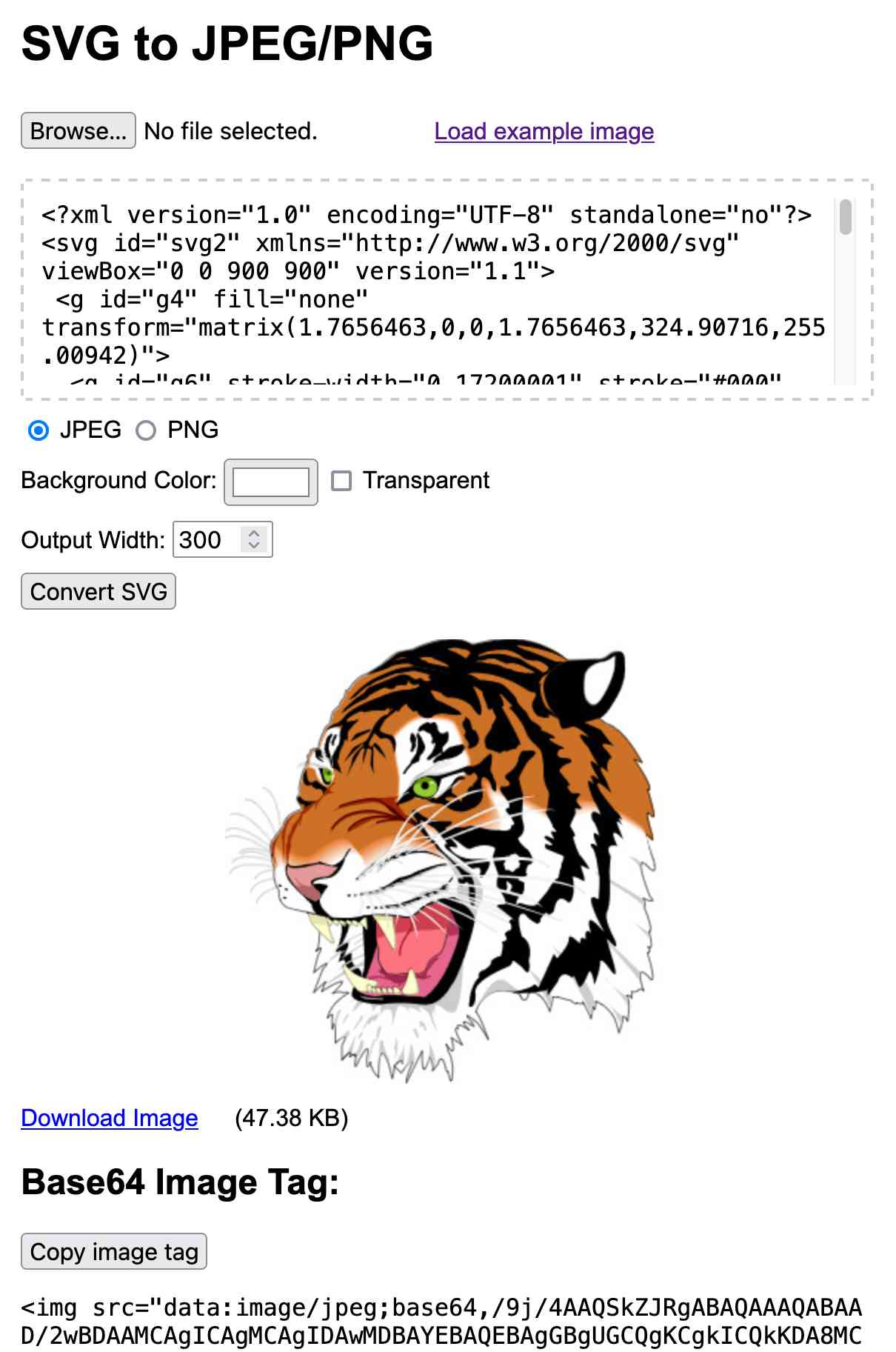Sunday, 6th October 2024
Students who use AI as a crutch don’t learn anything. It prevents them from thinking. Instead, using AI as co-intelligence is important because it increases your capabilities and also keeps you in the loop. […]
AI does so many things that we need to set guardrails on what we don’t want to give up. It’s a very weird, general-purpose technology, which means it will affect all kinds of things, and we’ll have to adjust socially.
SVG to JPG/PNG. The latest in my ongoing series of interactive HTML and JavaScript tools written almost entirely by LLMs. This one lets you paste in (or open-from-file, or drag-onto-page) some SVG and then use that to render a JPEG or PNG image of your desired width.

I built this using Claude 3.5 Sonnet, initially as an Artifact and later in a code editor since some of the features (loading an example image and downloading the result) cannot run in the sandboxed iframe Artifact environment.
Here's the full transcript of the Claude conversation I used to build the tool, plus a few commits I later made by hand to further customize it.
The code itself is mostly quite simple. The most interesting part is how it renders the SVG to an image, which (simplified) looks like this:
// First extract the viewbox to get width/height
const svgElement = new DOMParser().parseFromString(
svgInput, 'image/svg+xml'
).documentElement;
let viewBox = svgElement.getAttribute('viewBox');
[, , width, height] = viewBox.split(' ').map(Number);
// Figure out the width/height of the output image
const newWidth = parseInt(widthInput.value) || 800;
const aspectRatio = width / height;
const newHeight = Math.round(newWidth / aspectRatio);
// Create off-screen canvas
const canvas = document.createElement('canvas');
canvas.width = newWidth;
canvas.height = newHeight;
// Draw SVG on canvas
const svgBlob = new Blob([svgInput], {type: 'image/svg+xml;charset=utf-8'});
const svgUrl = URL.createObjectURL(svgBlob);
const img = new Image();
const ctx = canvas.getContext('2d');
img.onload = function() {
ctx.drawImage(img, 0, 0, newWidth, newHeight);
URL.revokeObjectURL(svgUrl);
// Convert that to a JPEG
const imageDataUrl = canvas.toDataURL("image/jpeg");
const convertedImg = document.createElement('img');
convertedImg.src = imageDataUrl;
imageContainer.appendChild(convertedImg);
};
img.src = svgUrl;Here's the MDN explanation of that revokeObjectURL() method, which I hadn't seen before.
Call this method when you've finished using an object URL to let the browser know not to keep the reference to the file any longer.